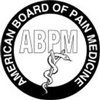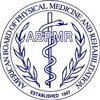Home » Blog
| Stem Cell, PRP, Acupuncture in Queens & Long Island, New York
Blog | Stem Cell, PRP, Acupuncture in Queens & Long Island, New York
Shoulder pain is a common issue that can severely impact daily life and work performance. Shoulder sprains and strains, in particular, are injuries that can result from various causes, including accidents, repetitive motions, and heavy lifting. Understanding the difference between a sprain and a strain and the treatment options available, including interventional pain management techniques, can help patients find relief and return to their routine faster.
Read more
Low back pain is one of the most common conditions affecting adults worldwide, contributing to reduced mobility, decreased quality of life, and lost productivity. For many, persistent pain can make daily tasks feel insurmountable but effective treatment options are available. At Precision Pain Care and Rehabilitation, interventional pain management offers relief for those struggling with low back pain, allowing them to return to a more active and pain-free life.
Read more
Leg pain can range from a minor inconvenience to a life-limiting condition, affecting mobility and overall quality of life. Precision Pain Care and Rehabilitation specializes in providing solutions for leg pain through interventional pain management—a treatment approach focusing on pinpointed therapies to alleviate pain, often without the need for major surgery.
Read more
Neck pain is one of the most common and debilitating issues that affects people of all ages, often disrupting daily routines and reducing quality of life. Whether due to poor posture, injury, or degenerative changes in the spine, neck pain can be challenging to treat with traditional methods alone. Fortunately, interventional pain management offers an array of specialized treatments aimed at providing relief, minimizing discomfort, and enhancing mobility.
Read more
Lumbar radiculopathy, commonly known as sciatica, affects millions of individuals, causing pain, tingling, or numbness radiating from the lower back down to the legs. This often debilitating condition arises when nerve roots in the lumbar spine (lower back) become compressed or irritated, usually from issues like herniated discs, bone spurs, or degenerative disc disease.
Read more
For many patients, spinal surgery, such as a laminectomy, offers the promise of relief from chronic back or leg pain. However, in some cases, pain persists or even worsens after surgery—a condition known as Post Laminectomy Syndrome (PLS). This complex syndrome can be both physically and emotionally challenging for those who anticipated a return to a pain-free life. Interventional Pain Management offers a range of solutions to help these individuals manage their discomfort and improve their quality of life.
Read more
Facet Joint Syndrome is a common but often underdiagnosed cause of neck and back pain that can significantly affect quality of life. At Precision Pain Care and Rehabilitation, we specialize in managing this condition through advanced interventional pain management techniques. Here, we’ll explore Facet Joint Syndrome, its symptoms, causes, and innovative treatment options that can help patients find relief.
Read more
Myofascial Pain Syndrome (MPS) is a chronic pain disorder caused by inflammation in the fascia—the connective tissue covering muscles. Unlike common muscle soreness, MPS is characterized by painful trigger points, and small knots in the muscle that can lead to referred pain, making the pain spread to other areas of the body.
Read more
Cervical radiculopathy, commonly referred to as a "pinched nerve" in the neck, is a condition that causes pain and discomfort originating from the cervical spine (neck area) and radiates down through the shoulders, arms, and hands. This pain results from compression or irritation of one or more nerves in the cervical spine, often due to herniated discs, degenerative disc disease, or other spinal issues.
Read more
Degenerative Disc Disease (DDD) is a common yet often misunderstood condition that affects millions of people worldwide. At Precision Pain Care and Rehabilitation, we aim to provide our patients with a thorough understanding of DDD and how interventional pain management can effectively relieve its symptoms.
Read more
Love this Post? Spread the World






















